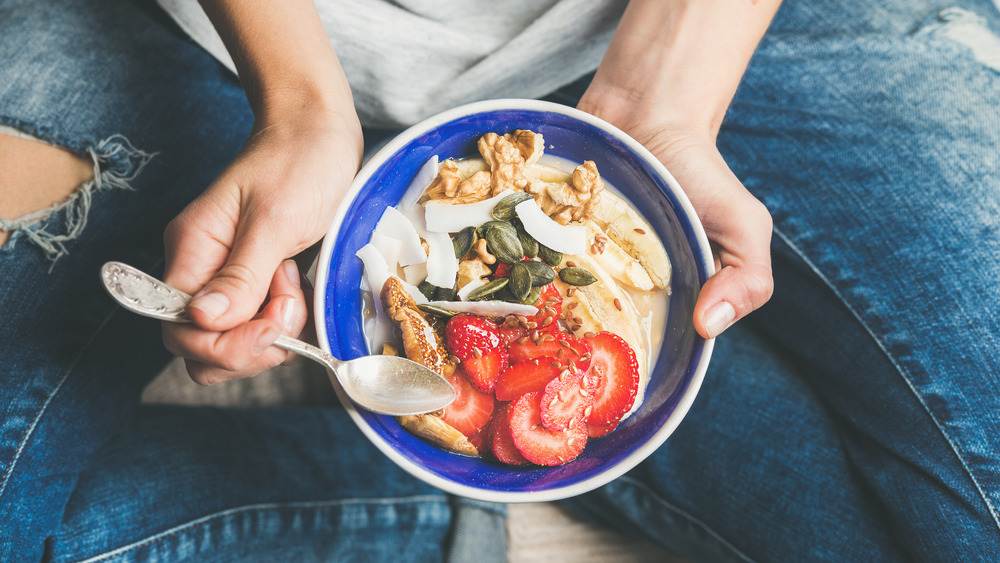Why Slow Eating Might Be The Easiest Weight Loss Hack Out There
If you've struggled to stick with any type of restrictive diet in the past, a simple way to potentially lose weight while still feeling satisfied might be to just slow down your eating. Slow eating has become more popular in recent years, and it's the easiest diet trend to follow. Rather than gulping down each meal or eating on the run, slow eating urges you to pause and enjoy every single bite. And this isn't just good for potential weight loss, it may improve digestion as well.
When you eat slowly, taking the time to savor each mouthful of your meal, you begin to understand what feeling full actually feels like. It also helps you avoid tipping into being too full or stuffed. According to Harvard Health Publishing, we don't feel full just because our stomachs start to expand. We feel full because a signal is sent to our brains letting us know that we're satisfied. In fact, it takes up to 20 minutes for our brains to get the message that we're full — and most of us are eating our whole meal faster than that (via Precision Nutrition). The slower we can eat, the more time we're allowing for our gut to communicate with our brain, which may help us stop eating sooner than we would otherwise.
How slow is slow?
A study found that slow eaters consume around 2 ounces of food per minute, while fast eaters will consume 3.1 ounces — an increase of more than 150 percent. Because digestion begins in the mouth with saliva starting to break down the components of your meal, when you eat faster, you risk missing that step in digestion, swallowing some food before it's fully chewed. Taking more time with each bite ensures that your digestion is more efficient.
The best part about eating slowly is the only downside is that it takes up more time for each meal. If you're busy with work or family life, it can be tricky to make enough time to truly sit down and enjoy a meal, and in those times, having a plan in place for a quick healthy meal that you can eat on the go can be helpful. But try to build in more opportunities to sit and eat without rushing — including leisurely meals with family or friends.
Slow eating on its own may not be enough of an intervention to help you drop weight, though, especially if you have a lot to lose. You may also have to change the quality of your meals, and monitor your quantity as your body adjusts to what feeling full should feel like.


